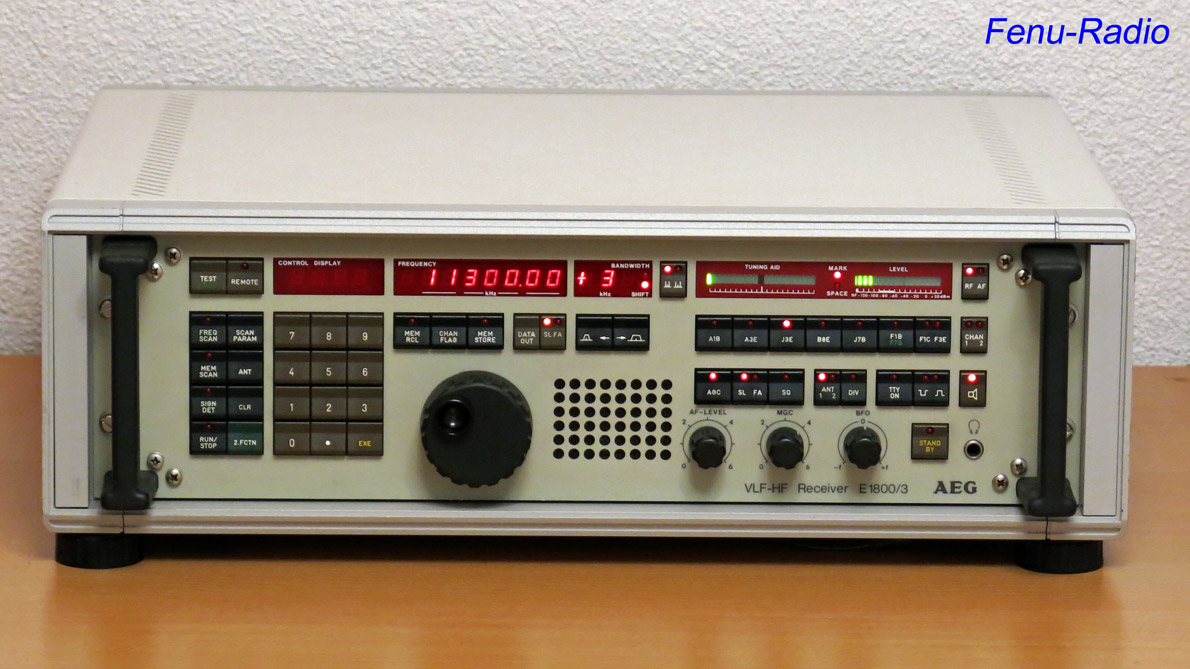|
The E1800/3 is one oft the most sought-after professional receivers. According to tests performed in the 1990s it was judged the best receiver in the world. No wonder then that it was sold at enormously high prices. It was not unusual for people top pay more than 10000 € for a used E1800/3 on the secondhand market. The original price of the E1800/3, which is shown here, was 52835 DM. Here is a detailed line up based on the original price list:
After the E1800, the E1800/3 is the successor of the tried and tested E1501 and E1700 receivers. Some components taken from the E1501 and E1700 were used for the E1800/3. These components, however, were optimized again and again. Like its preceding models, the E1800/3 was used mostly by the military in their listening posts as well as at marine radio stations. Many of these receivers were also used at automated listening posts where a computer-based system monitored the frequencies. These receivers were partly taken out of service and replaced by software defined radios (SDR). That is why some of these receivers are available on the second hand market almost brand new, because they were never touched.
Depending on its intended use, the receiver specifications may vary. The receiver which I tested was mainly used for CW, RTTY and SSB. I tested the E1800/3 for about two weeks and formed an opinion about the then "best receiver in the world". In order to make a fair comparison, I borrowed a Racal RA3712 from a colleague of mine. This is a somewhat more modern and flexible radio than the E1800/3 but its performance is practically on par with the E1800/3. Additionally, I used my own receivers for this test. The E1800/3 really is a top class receiver. But it was not better or worse than the RA3712. Both receivers had the same signal quality. I have to emphasize, however, that this was only possible with the manual gain control activated because the AGC automatic is not optimized for SSB or broadcast. The AGC control sets in much too fast. As a result, the first syllables at the beginning of a sentence are cut off because of the AGC control. A big disadvantage for such a receiver which is corroborated by other owners of the 1800/3! Just like other professional receivers, the E1800/3 is flexible as rock! There are no controls to improve reception, e.g., noise blanker, band pass tuning, etc. If a shortwave listeners want to operate such a receiver, they have to have additional equipment. e.g. audio filters. If the receiver does not have the appropriate IF- filters, things can become very expensive and can result in an extensive search. Such IF-filters are practically non-existent, especially the 5 and 6kHz AM filters are nowhere to found. The E1800/3 is a top-class receiver with an improved and simplified handling compared to its predecessors. But unfortunately, it is not a suitable receiver for shortwave listeners. Despite its excellent reception quality with the manual gain control active, the E1800/3 is only partly usable because it is too inflexible. Compared to a modern receiver , e.g., the Reuter RDR50CV2 or the Perseus SDR, it becomes clear immediately what such a receiver is lacking: Flexibility! Is such a receiver worth buying? From a practical point of view, clearly NO! If you see things sentimentally and have the necessary wherewithal: definitely YES! It is a wonderful piece of equipment that puts a spell on you and which is lots of fun. Under this link there are technical data and further information about the E1800/3. >E1800/3< Thanks Reinhart.
Written at 21.04.2014
The E1800/3 in Action (HD-Video)
|


.jpg)
.jpg)
.jpg)
.jpg)

